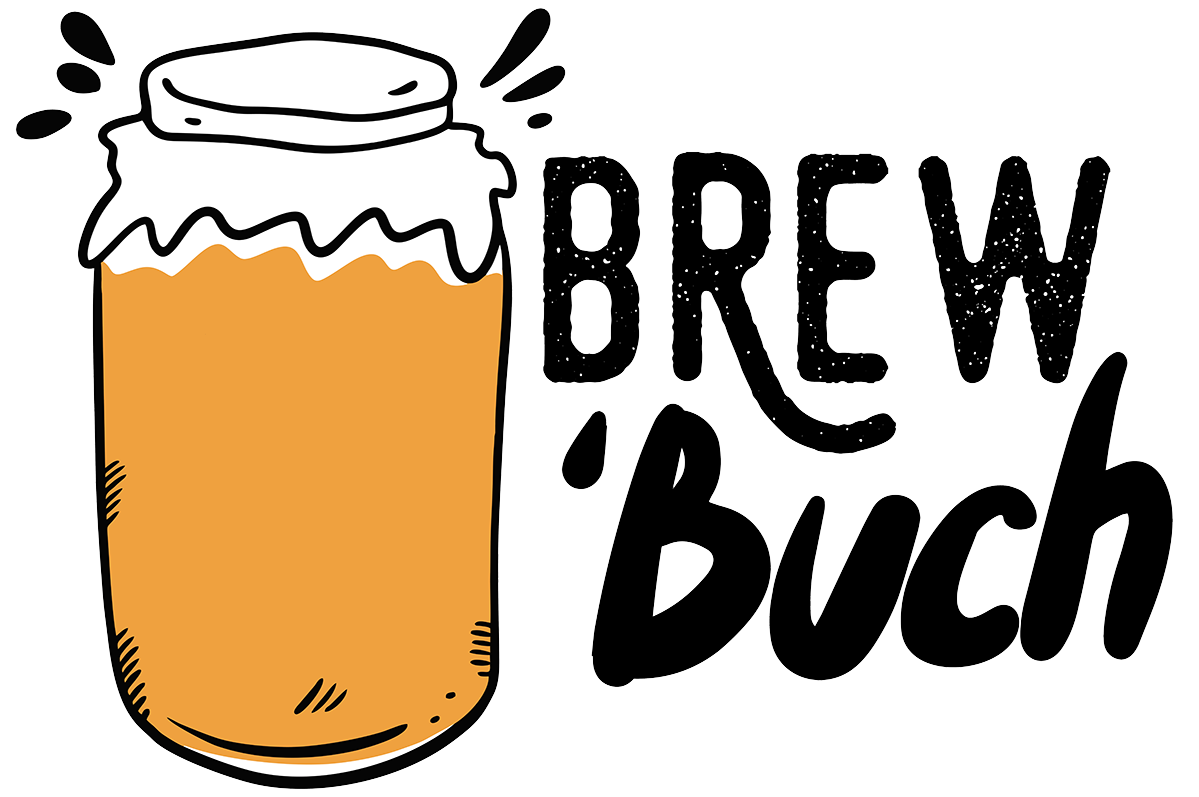Whether you are looking for a classic black tea like earl gray or something a little warmer like oolong, we are covering 21 types of black tea in this helpful guide!
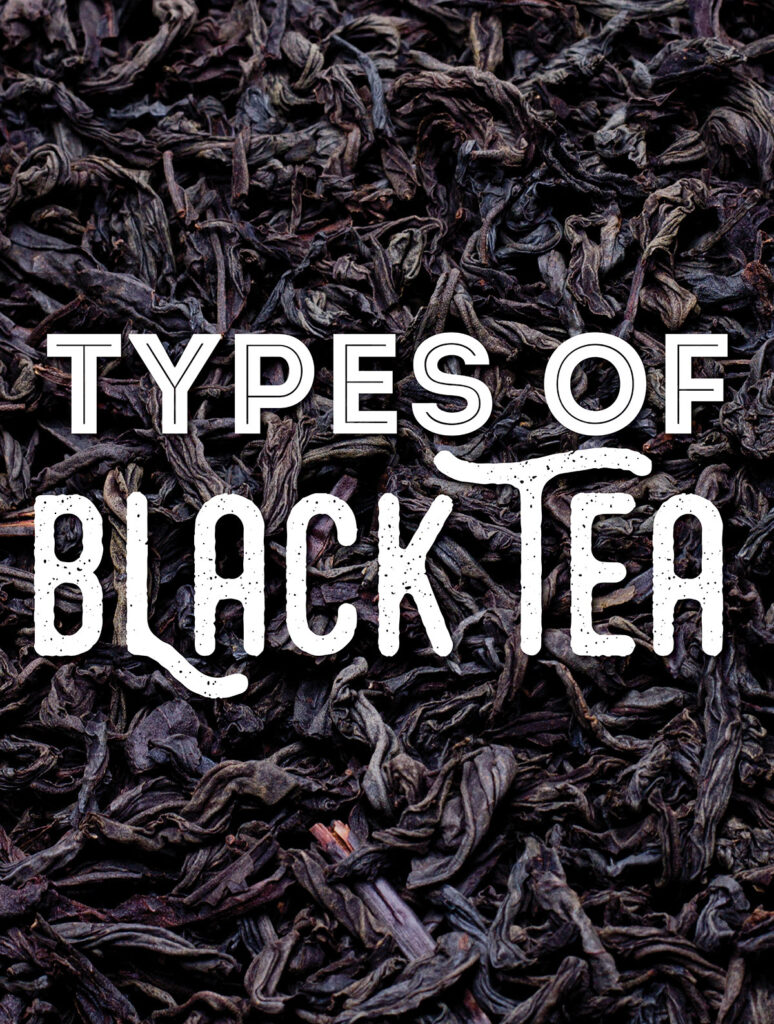
Trivia Time! Today you can buy a pound of quality dry tea for $20-$30 or about an hour’s wage. How much would a pound of tea have cost in London in 1700? Scroll to the bottom of this article for the answer.
Black Tea Health Benefits
There are quite a few purported health benefits to black tea, but we can’t really guarantee the validity of all of them. Still, there is a fairly large and strong body of evidence suggesting that tea is good for you in a lot of different ways.
Antioxidant Properties
Black tea contains polyphenols, particularly catechins and theaflavins, which act as antioxidants in the body. These antioxidants help to neutralize harmful free radicals and protect cells from oxidative damage, which may reduce the risk of chronic diseases such as heart disease and certain types of cancer.
Heart Health
Regular consumption of black tea has been linked to a reduced risk of heart disease. The flavonoids in black tea may help improve blood vessel function, reduce inflammation, lower blood pressure, and decrease LDL (bad) cholesterol levels, thus promoting cardiovascular health.
Oral Health
Black tea has been found to have antibacterial properties that can help prevent tooth decay and gum infections. It may also reduce the growth of harmful bacteria in the mouth and prevent the formation of plaque.
Digestive Health
Black tea is known to contain tannins, which have astringent properties. These compounds can help reduce intestinal inflammation and soothe digestive issues such as diarrhea.
Reduced Risk of Stroke
Some studies suggest that regular consumption of black tea may be associated with a lower risk of stroke. The flavonoids in black tea may help improve blood flow, reduce blood clot formation, and protect against the damage caused by a stroke.
Diabetes Management
Research has shown that black tea consumption may help lower blood sugar levels and improve insulin sensitivity. This can be beneficial for individuals with type 2 diabetes or those at risk of developing it.
It’s important to note that while black tea offers potential health benefits, it’s also important to consume it in moderation as excessive intake of caffeine may have adverse effects for some individuals, such as increased heart rate, anxiety, and difficulty sleeping.
Also keep in mind that while we can’t definitively support these benefits, we do know that black tea tastes great and it is the only tea that should be used to start your kombucha SCOBY. So, let’s look at some of the many varieties of black tea.
Types of Black Tea
- Assam Tea
- Ceylon Black Tea
- Darjeeling Tea
- Dian Hong Tea
- Earl Grey Tea
- English Breakfast Tea
- Fujian Tea
- Golden Monkey Tea
- Gongfu Black Tea
- Irish Breakfast Tea
- Jin Jun Mei Tea
- Keemun Tea
- Lapsang Souchong Tea
- Masala Chai Tea
- Nilgiri Tea
- Oolong Tea
- Orange Pekoe Tea
- Pu-erh Tea
- Russian Caravan Tea
- Taiwanese Black Tea
- Yunnan Tea
Assam Tea
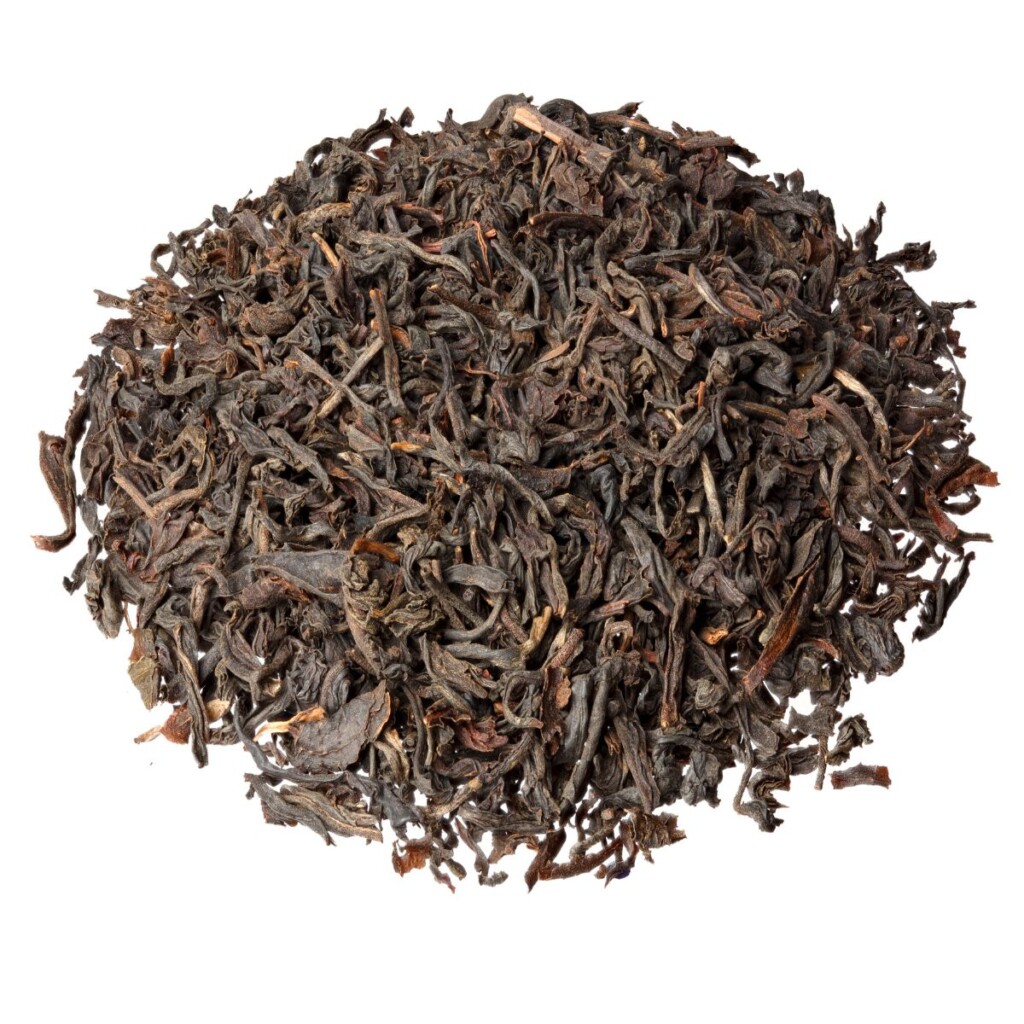
Assam tea is named after the region in India where it is primarily produced, the northeastern state of Assam. Assam tea is made from the Camellia Sinensis which is native to the region. The tea is harvested and processed using the orthodox method, which involves withering, rolling, oxidation, and drying.
Flavor: Assam tea is full-bodied and often described as brisk. It has a strong, robust flavor with a distinct malty sweetness. The aroma is rich and sometimes accompanied by hints of fruit or honey. It is known for its deep red color. Assam tea has a high caffeine content, making it an excellent choice for those seeking an energy boost, or perhaps one to avoid for those who don’t.
Brewing: To brew Assam tea use freshly boiled water and steep the tea leaves for 3-5 minutes. Adjust the steeping time according to your taste preferences. Assam tea is often enjoyed with milk and sugar.
Ceylon Black Tea
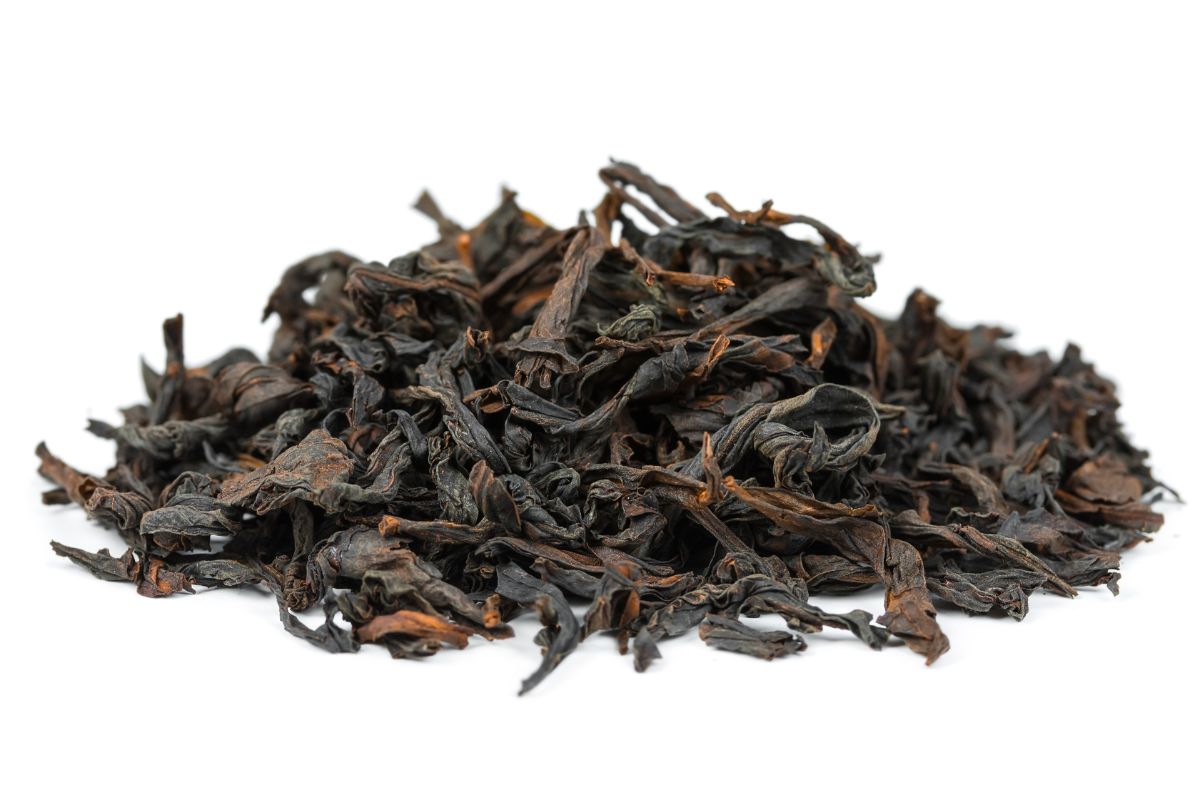
Ceylon tea, now known as Sri Lankan tea, is named after the island of Ceylon (present-day Sri Lanka), where it is predominantly produced. Ceylon tea is made from various processing methods, including orthodox and CTC (crush, tear, curl). The orthodox method yields higher-quality teas, while CTC is often used for tea bags and blends.
Flavor: Ceylon tea comes in a wide range of flavors, from delicate and light to bold and robust. The flavor profile can be influenced by factors such as elevation and the region of cultivation. The aroma is usually bright and citrusy with floral or fruity notes. Ceylon tea contains a moderate amount of caffeine, providing a gentle energy boost without being too strong.
Brewing: Brew Ceylon tea with freshly boiled water and steep for 3-5 minutes. Adjust the steeping time based on your desired strength. Ceylon tea is versatile and is drunk plain or with a slice of lemon.
Darjeeling Tea
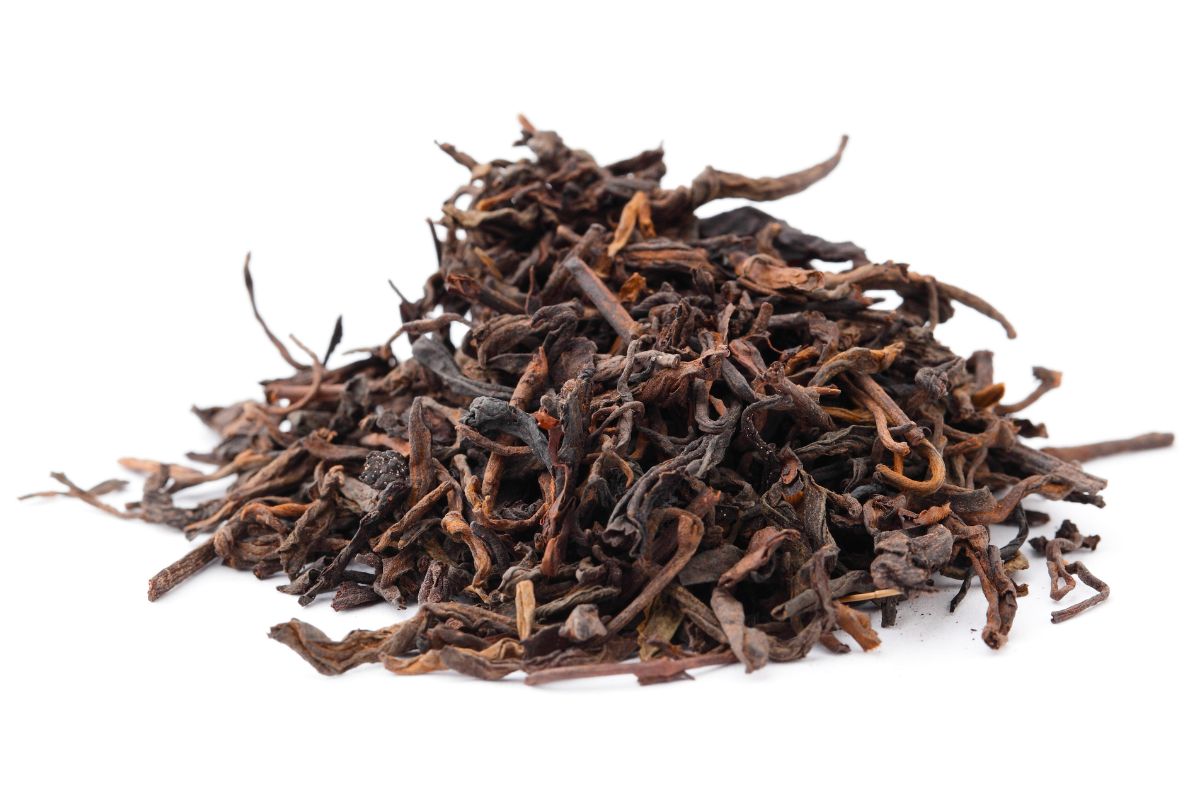
Darjeeling tea is grown in the Darjeeling district of West Bengal, India, which is situated in the foothills of the Himalayas. It is often referred to as the “Champagne of teas.” Now that is pretty high praise. It is made using the orthodox method described above under Assam tea. It is hand-plucked and undergoes minimal processing to preserve its delicate flavors.
Flavor: Darjeeling tea has a unique flavor profile that is often described as muscatel. It has a floral and fruity taste with a subtle astringency. The aroma is reminiscent of muscat grapes or musk. Darjeeling tea contains a moderate amount of caffeine, similar to Ceylon tea.
Dian Hong Tea
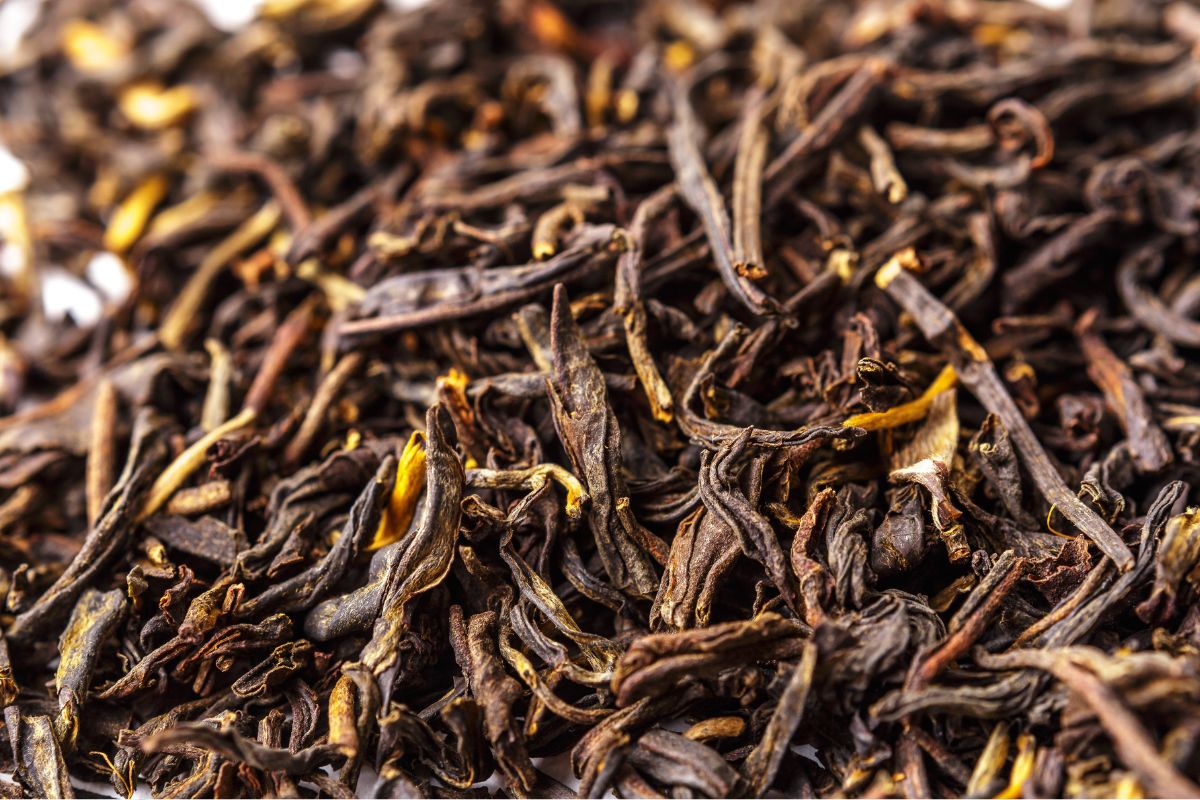
Dian Hong, also known as Yunnan black tea as it originates from the Yunnan province in China. Dian Hong is made from the leaves of large-leaf tea cultivars, primarily the Yunnan Daye cultivar. The leaves are harvested, withered, rolled, oxidized, and then fired to stop the oxidation process.
Flavor: Dian Hong is known for its rich, smooth, and malty flavor with hints of honey and caramel. It has a robust and sweet aroma. Dian Hong contains moderate to high levels of caffeine, providing an energizing effect. Like other black teas, Dian Hong contains antioxidants that can support heart health, boost metabolism, and provide mental alertness.
Brewing: To brew Dian Hong tea use freshly boiled water (around 195-205°F or 90-95°C) and steep the leaves for 3-5 minutes. Adjust the steeping time according to your preference for strength.
Earl Grey Tea

Earl Grey is a flavored tea that originated in England. It is named after Charles Grey, a former British Prime Minister (1830-1834). Grey is typically made from black tea leaves that are scented or flavored with oil extracted from the rind of bergamot oranges.
Flavor: Earl Grey has a distinctive citrusy flavor with a delicate floral note from the bergamot oil. It offers a refreshing and aromatic experience. Earl Grey contains caffeine similar to other black teas. Earl Grey tea, like black tea in general, may provide antioxidants and potentially offer benefits such as improved heart health and digestion.
Brewing: To brew Earl Grey tea we recommend using water heated to around 195-205°F (90-95°C) and steeping Earl Grey tea for 3-4 minutes. You can adjust the steeping time based on your preferred strength.
English Breakfast Tea
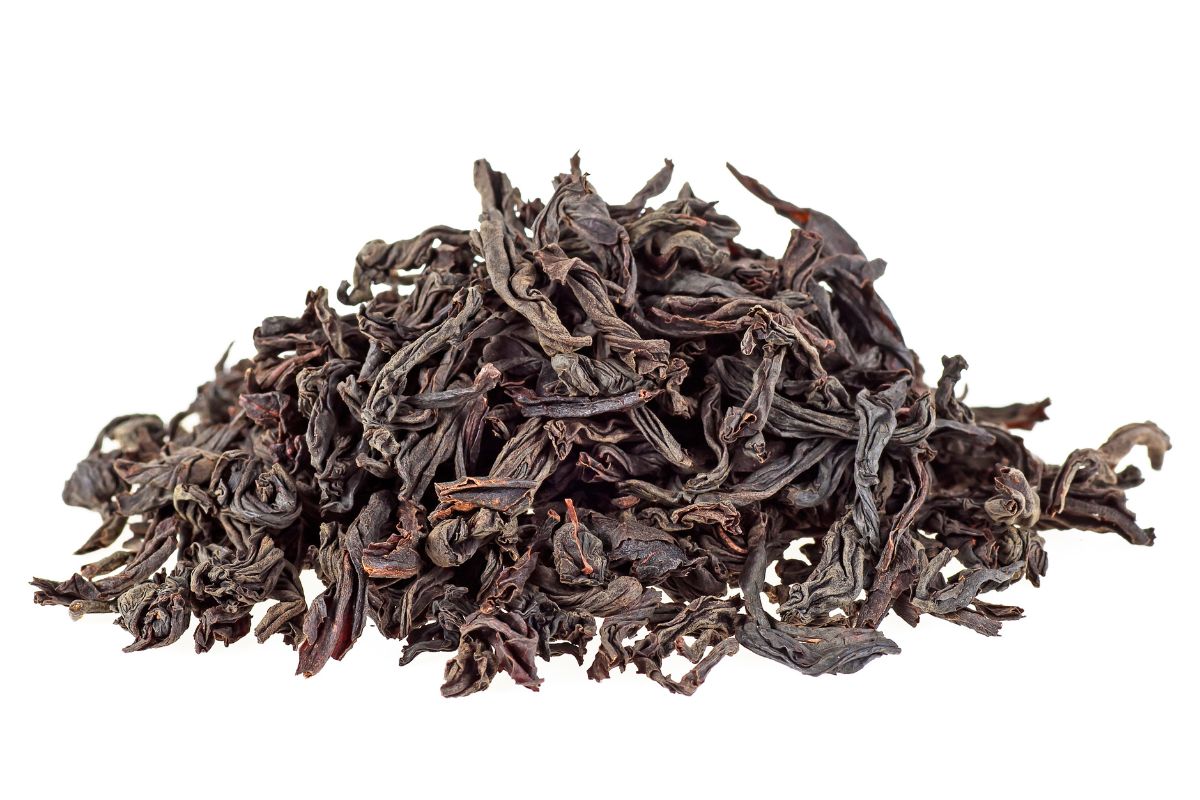
English Breakfast tea is a blend of black teas that originated in the United Kingdom. It typically combines black teas from different regions, such as Assam, Ceylon, and Kenya, to create a balanced and robust blend.
Flavor: English Breakfast has a bold, robust flavor with a malty undertone. It offers a well-rounded taste that goes well with or without milk and sugar. The aroma is rich and inviting. The caffeine content is similar to other black teas.
Brewing: Brewing English breakfast tea is simple. Use boiling water (212°F or 100°C) and steep your tea for 3-5 minutes. Adjust the steeping time according to your taste preferences.
Fujian Tea

Fujian is a province in China known for producing a variety of teas, including white, green, oolong, and black teas. The Fujian tea production methods vary depending on the type of tea. Fujian is famous for its oolong teas, such as Tie Guan Yin and Da Hong Pao, as well as its black teas like Zheng Shan Xiao Zhong (Lapsang Souchong).
Flavor: Fujian teas have diverse flavors and aromas due to the range of tea types produced. Oolong teas from Fujian offer a floral and fruity flavor, while black teas can have a smoky or malty flavor profile. The caffeine content in Fujian teas can vary depending on the specific type of tea. Oolong teas generally contain moderate levels of caffeine, while black teas have similar caffeine levels to other black teas.
Health Benefits: Fujian teas, like other types of tea, provide antioxidants that support overall health and wellness. Oolong teas are often associated with benefits such as weight management and improved digestion.
Brewing: The brewing methods for Fujian teas depend on the specific type of tea. It is best to follow the brewing instructions provided with the particular tea you have to ensure optimal flavor and aroma.
Golden Monkey Tea
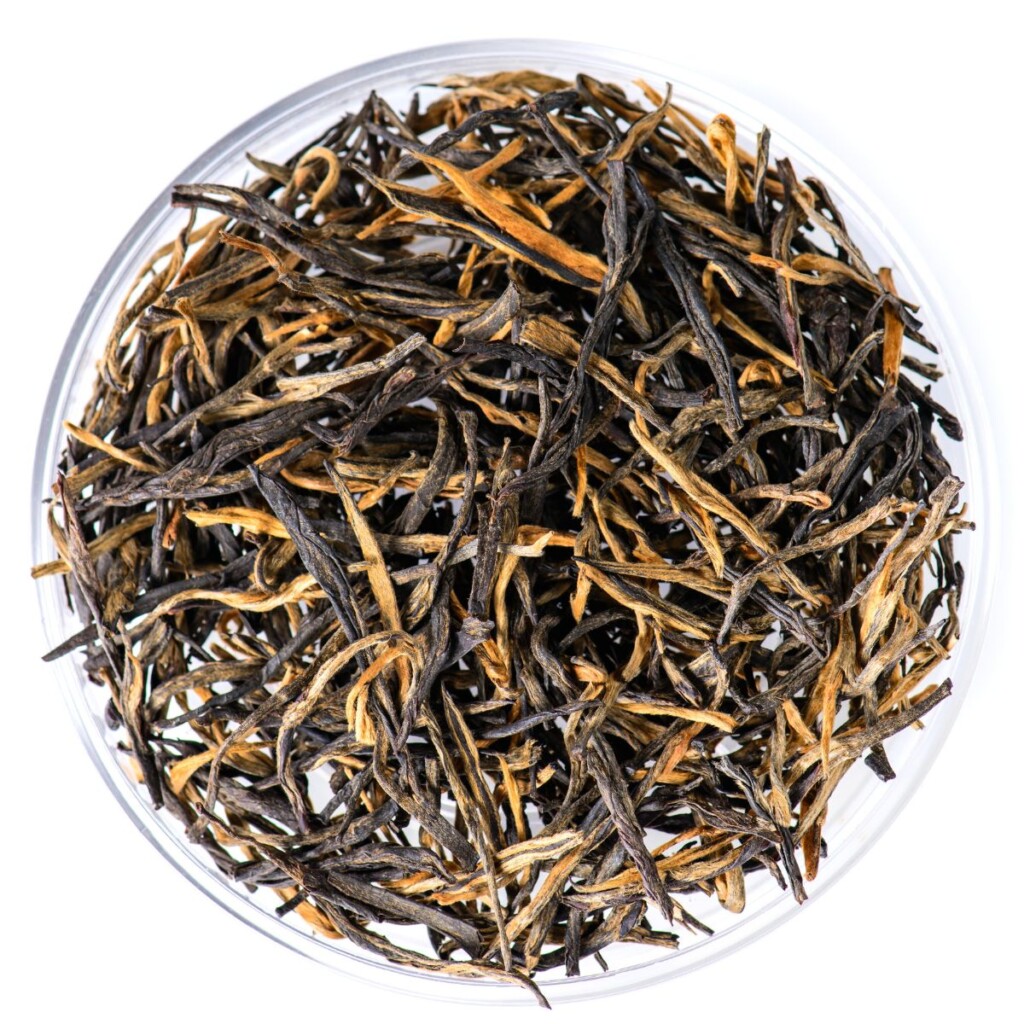
Golden Monkey, also known as Jin Hou Tea, is a Chinese black tea that originated from the Fujian province in China. The tea is made from young tea buds and leaves that are plucked in early spring. The leaves undergo a meticulous process of withering, rolling, oxidation, and drying to create its characteristic flavor.
Flavor: Golden Monkey tea has a rich and smooth flavor profile with hints of cocoa, honey, and malt. It offers a subtle sweetness with a touch of fruity and floral notes. The aroma is often described as sweet, floral, and slightly roasted. Golden Monkey tea contains a moderate amount of caffeine, similar to other black teas. It provides a stimulating effect without being overwhelming.
Brewing: To brew Golden Monkey tea, use approximately 1 teaspoon of loose tea leaves per 8 ounces of water heated to around 195-205°F (90-96°C). Steep the tea for 3-4 minutes, but adjust steeping time to your preference for a stronger or milder flavor. Enjoy the tea plain or with a dash of milk or sweetener if desired.
Gongfu Black Tea
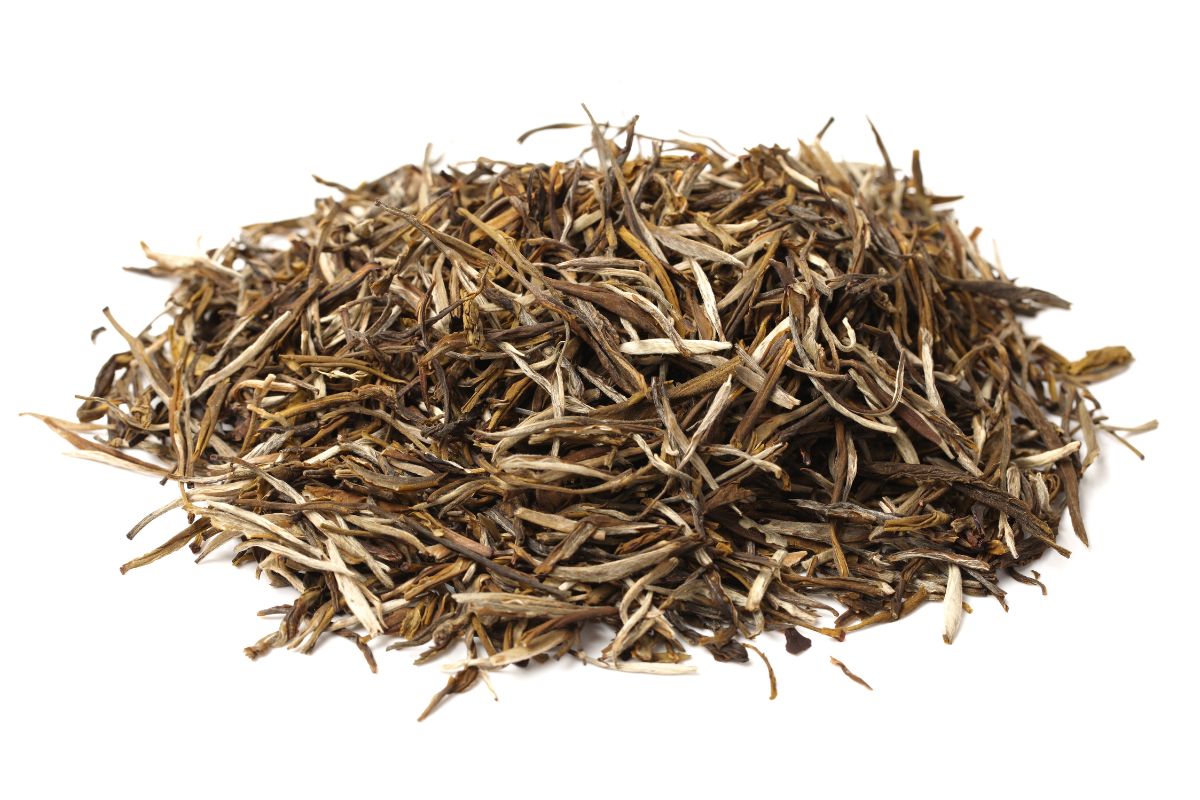
Gongfu Black tea, also known as Gongfu Hongcha Tea, is a Chinese tea typically grown in the Wuyi Mountains of the Fujian province. The tea leaves used for Gongfu Black are carefully hand-picked and processed. The leaves undergo a partial fermentation and are then roasted to achieve their unique flavor profile.
Flavor: Gongfu black tea offers a bold and robust flavor with notes of caramel, chocolate, and sometimes hints of spice or fruit. It has a rich, smooth texture and a lingering sweet aftertaste. The aroma is often described as warm, toasty, and floral. Gongfu Black tea contains a moderate amount of caffeine, similar to other black teas. It can provide an invigorating boost of energy.
Brewing: To brew Gongfu Black tea in the gongfu style use a small teapot or gaiwan (a lidded bowl) to brew the tea. Use approximately 1 teaspoon of loose tea leaves per 6-8 ounces of water heated to around 195-205°F (90-96°C). Rinse the tea leaves briefly with hot water, then discard the rinse, and steep the tea for 20-30 seconds for the first infusion, gradually increasing steeping time for subsequent infusions. Adjust the steeping time and water-to-tea ratio to suit your taste preferences.
Irish Breakfast Tea
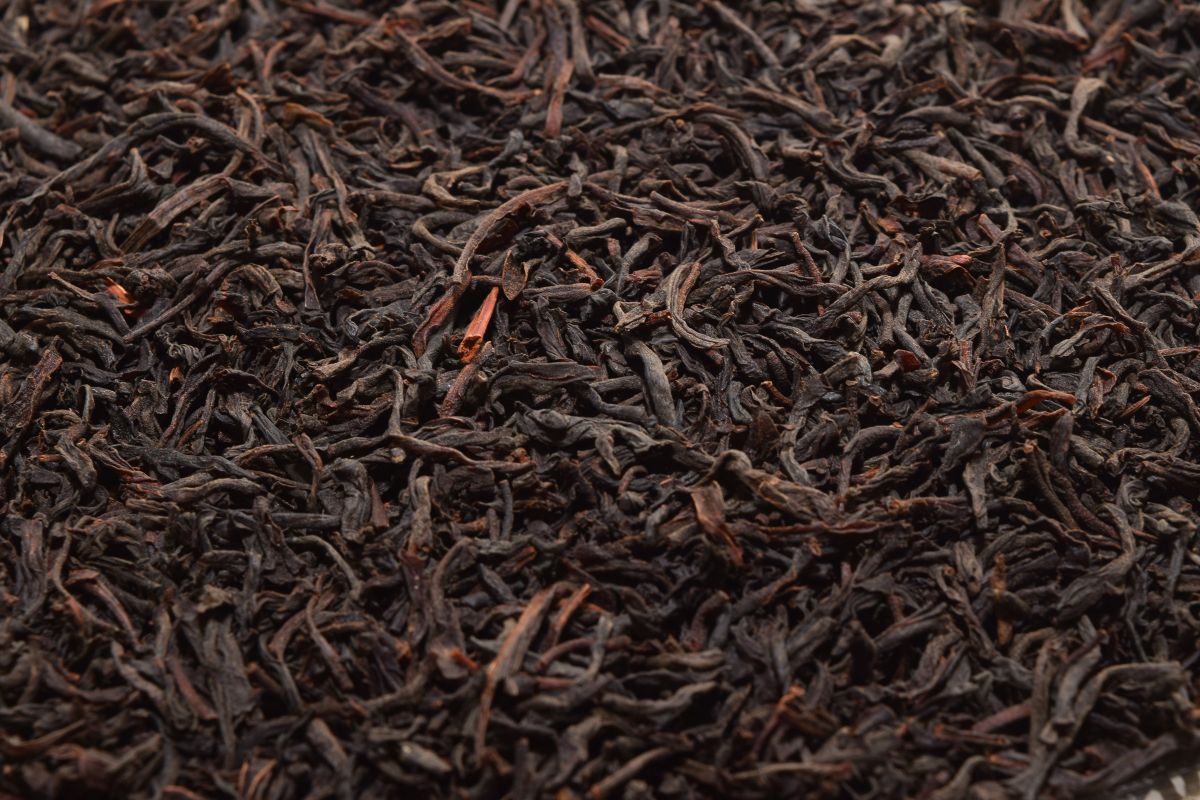
Irish Breakfast is a blend of black teas that originated in Ireland, but the individual teas used in the blend can come from various regions including Assam (India) and Ceylon (Sri Lanka). The blend is designed to create a robust and full-bodied flavor.
Flavor: Irish Breakfast tea has a bold and malty flavor with hints of caramel and a slight bitterness. It is known for its rich, dark infusion and strong aroma. Irish Breakfast tea contains a moderate to high amount of caffeine due to the use of robust black teas. It provides a significant energy boost.
Brewing: To brew Irish breakfast tea, use approximately 1 teaspoon of loose tea leaves (or one tea bag) per 8 ounces of water. Heat the water to a rolling boil then steep the tea for 3-5 minutes, depending on your desired strength. Serve the tea plain or with milk and sweetener, as per your preference.
(This is one of our top choices when it comes to choosing the best tea for brewing kombucha!)
Jin Jun Mei Tea

Jin Jun Mei is a Chinese black tea that originated from the Wuyi Mountains in the Fujian province. It is a relatively new tea variety compared to others on this list. Jin Jun Mei is made from young tea buds that are carefully hand-picked. The buds undergo a precise process of withering, rolling, oxidation, and drying to create a highly refined tea.
Flavor: Jin Jun Mei tea offers a complex flavor profile with notes of honey, caramel, sweet potato, and sometimes hints of floral or chocolate. It has a smooth and velvety texture and a lingering sweetness. The aroma is often described as sweet, fruity, and sometimes reminiscent of lychee. Jin Jun Mei tea contains a moderate amount of caffeine.
Brewing: To brew Jin Jun Mei tea use approximately 1 teaspoon of loose tea leaves per 8 ounces of water heated to around 195-205°F (90-96°C). Steep the tea for 3-4 minutes, adjusting the time to your taste preference. You might experiment with shorter or longer steeping times to explore different flavor profiles, but really this advice goes with just about any variety of tea. Jin Jun Mei is often enjoyed plain or with a touch of honey.
Keemun Tea
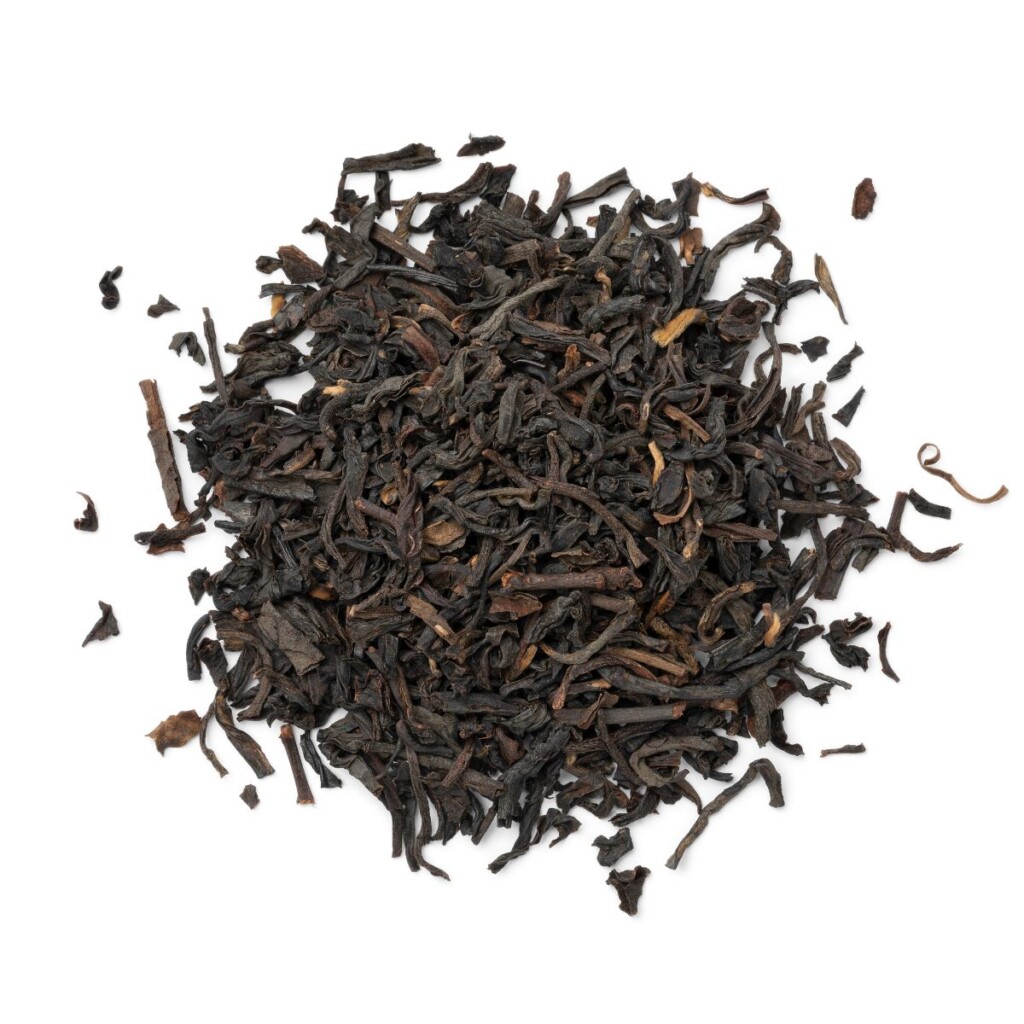
Keemun tea is a black tea that originates from Qimen County in China’s Anhui Province. Keemun tea leaves are harvested, withered, rolled, oxidized, and then dried.
Flavor & Aroma: The leaves are twisted and have a glossy appearance and produce a tea with a distinctive flavor profile with a wine-like fruity and floral taste. It has a complex aroma, often described as having hints of orchid, chocolate, and smokiness. Keemun tea typically contains moderate levels of caffeine, ranging from 25-50 mg per cup.
Brewing: To brew Keemun tea, use freshly boiled water at around 194-203°F (90-95°C). Steep the leaves for 3-5 minutes before removing them. As always, adjust the brewing time based on your preference for strength.
Lapsang Souchong Tea

Lapsang Souchong is a black tea originally from the Wuyi Mountains in the Fujian province of China. Lapsang Souchong tea leaves are withered, rolled, oxidized, and dried.
Flavor & Aroma: What sets it apart is the unique smoking process, where the leaves are smoked over pinewood fires, imparting a distinct smoky flavor that some describe as tasting like a campfire. It has a strong aroma of pine and smoke. Lapsang Souchong contains moderate levels of caffeine, similar to Keemun tea, ranging from 25-50 mg per cup.
Brewing: Brew lapsang using water heated to around 194-203°F (90-95°C). Steep the leaves for 3-5 minutes. Lapsang Souchong is often flavored with a touch of milk and sugar.
Masala Chai Tea
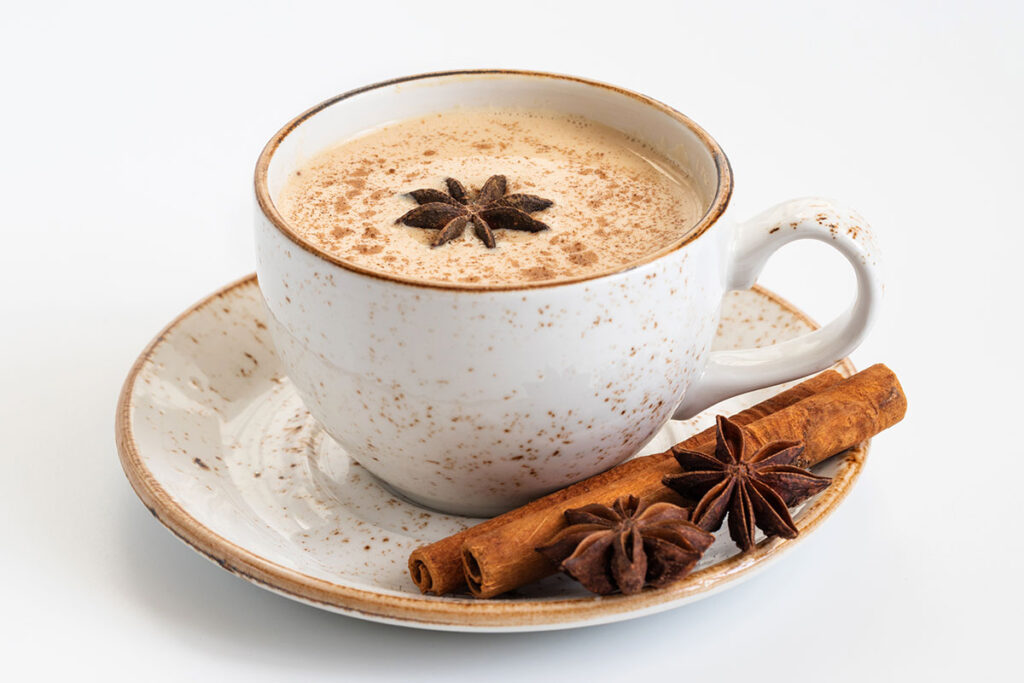
Masala Chai is a spiced tea blend that originated in India. It is typically made by combining black tea leaves with a mixture of aromatic spices such as cinnamon, cardamom, cloves, ginger, and black pepper.
Flavor: Masala Chai has a bold, rich flavor with a warming combination of spices. It offers a delightful blend of sweetness, spiciness, and creaminess. The aroma is fragrant and aromatic, thanks again to the spices. The caffeine content can vary greatly based on the tea used and brewing strength.
Brewing: To brew Masala Chai, combine black tea leaves, spices, and water in a pot. Simmer for a few minutes, then add milk and sweetener. Bring to a boil and let it simmer for a few more minutes. Strain the mixture and serve hot.
Nilgiri Tea
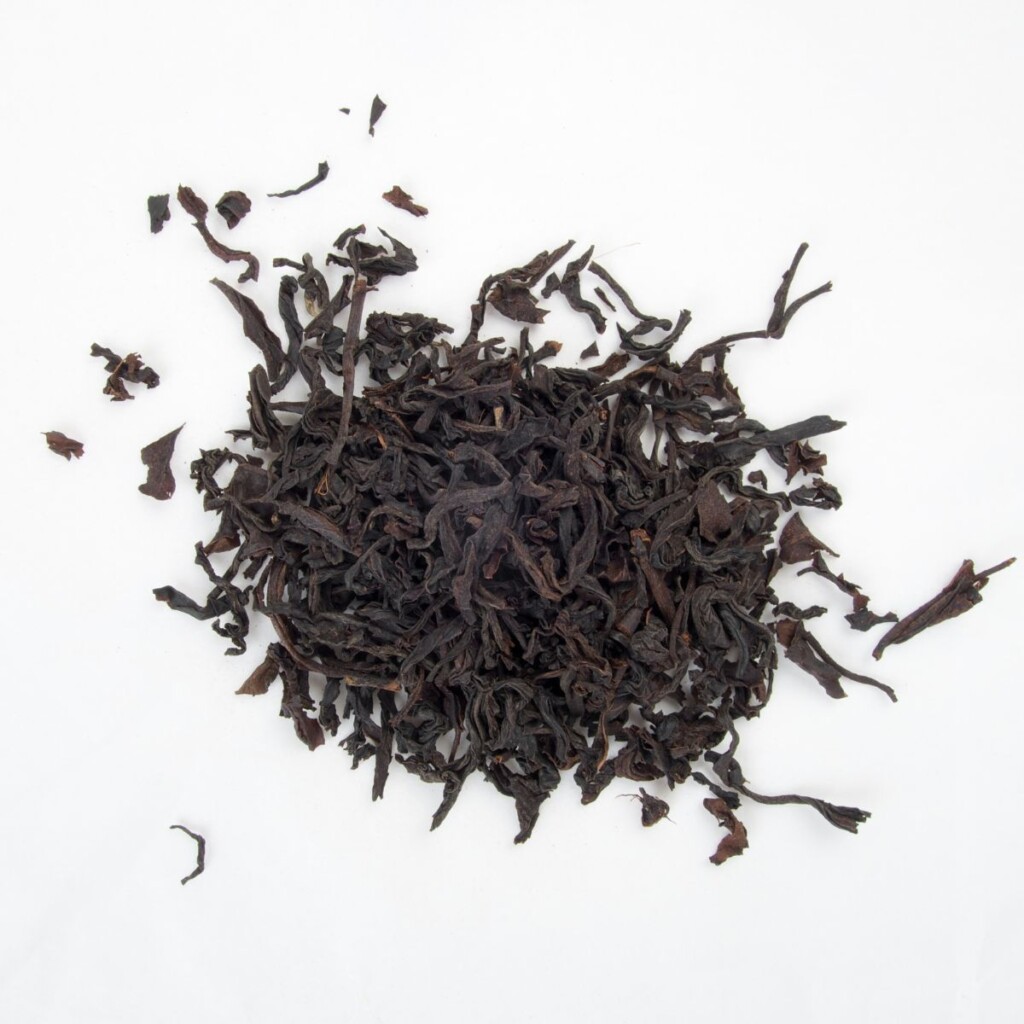
Nilgiri tea comes from the Nilgiri Hills in the southern state of Tamil Nadu, India. The leaves are harvested, withered, rolled, oxidized, and then dried.
Flavor: Nilgiri teas are known for their balanced, brisk flavor with a floral undertone. It is often described as having a fruity, citrus-like taste. The aroma is pleasant and fragrant. Nilgiri tea contains moderate levels of caffeine, similar to other black teas, ranging from 25-50 mg per cup.
Brewing: Brew Nilgiri tea with water heated to around 194-203°F (90-95°C). Steep the leaves for 3-4 minutes before straining. Adjust the brewing time based on your preference for strength.
Oolong Tea
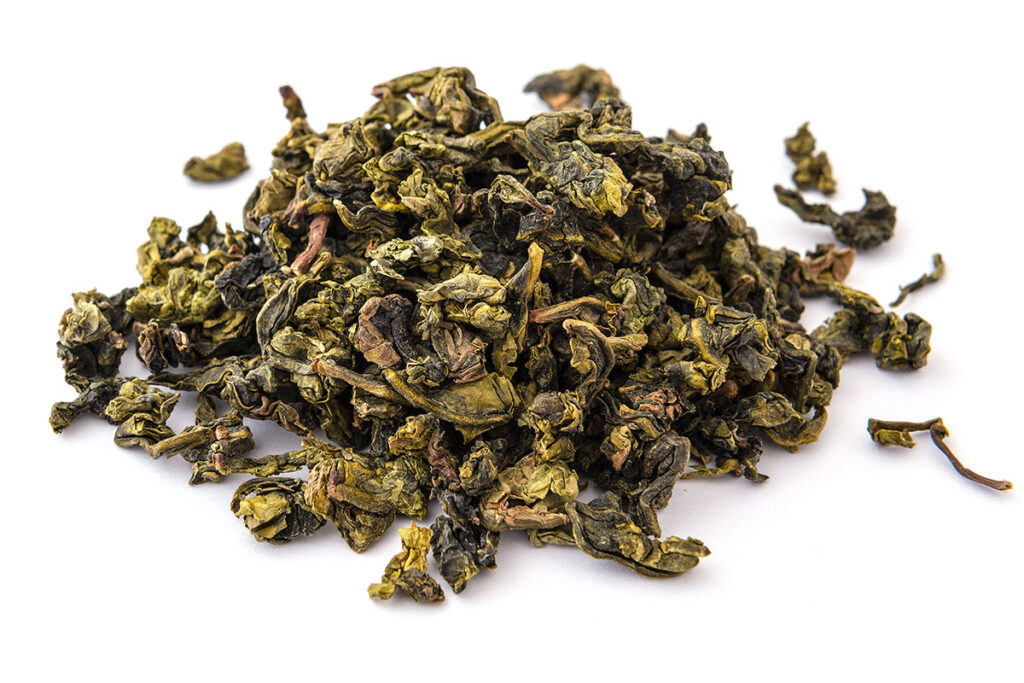
Oolong tea is a traditional Chinese tea, and is also produced in Taiwan. Oolong tea leaves undergo partial oxidation, a process more commonly used with green teas. The leaves are withered, partially oxidized, rolled or twisted, and then dried.
Flavor: Oolong tea offers a wide range of flavors depending on the specific type and processing. It can have a complex taste, ranging from floral and fruity to woody and roasted. The aroma can be floral, honey-like, or toasty. It is, obviously, a versatile tea, and generally contains moderate levels of caffeine.
Brewing: Brew Oolong tea with water heated to around 176-203°F (80-95°C) depending on the specific type of oolong (follow the directions provided with the tea). Steep the leaves for 2-4 minutes and adjust the time based on the desired strength and flavor profile.
Orange Pekoe Tea
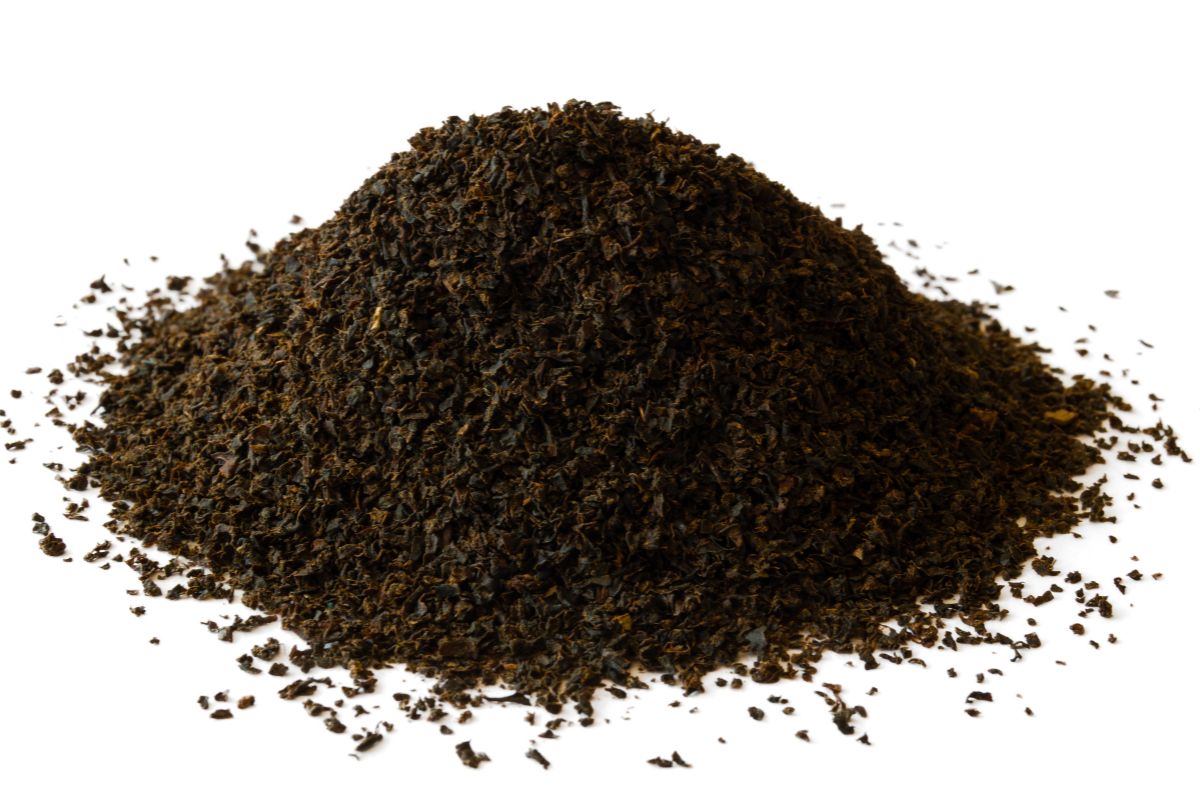
Orange Pekoe has its origins in the tea gardens of Sri Lanka (formerly known as Ceylon), although it is also produced in other tea-growing regions such as India and Kenya. The term “Orange Pekoe” refers to the grade or size of the tea leaves used, rather than the type or flavor of the tea. Orange Pekoe tea is made from the young leaves and buds of the Camellia sinensis plant. After harvesting, the leaves undergo a series of processes including withering, rolling, oxidation, and drying.
Flavor: The oxidation process gives the tea its characteristic black color and flavor. The tea is known for its smooth and mellow flavor profile, and typically offers a well-balanced combination of mild, floral, and fruity notes. The taste can vary slightly depending on the origin and processing methods, but it is generally less bitter and more delicate compared to other black teas.
Aroma: Orange Pekoe tea has a fragrant aroma that is often described as floral and sweet. The brewed tea releases a pleasant and inviting scent that can be enjoyed even before taking a sip. The aroma may have subtle hints of citrus, honey, or even maltiness, depending on the specific characteristics of the tea.
Brewing: To brew a perfect cup of Orange Pekoe tea, bring your water to a rolling boil, and preheat your teapot or cup to ensure optimal temperature retention. Use one teaspoon of loose Orange Pekoe tea leaves per cup or adjust according to your preference. Pour the hot water over the tea leaves and steep for 3-5 minutes. Adjust the steeping time to achieve the desired strength, but be careful not to over brew, as it may result in a bitter taste. Strain the tea leaves and pour the brewed tea into your teacup.
Pu-erh Tea
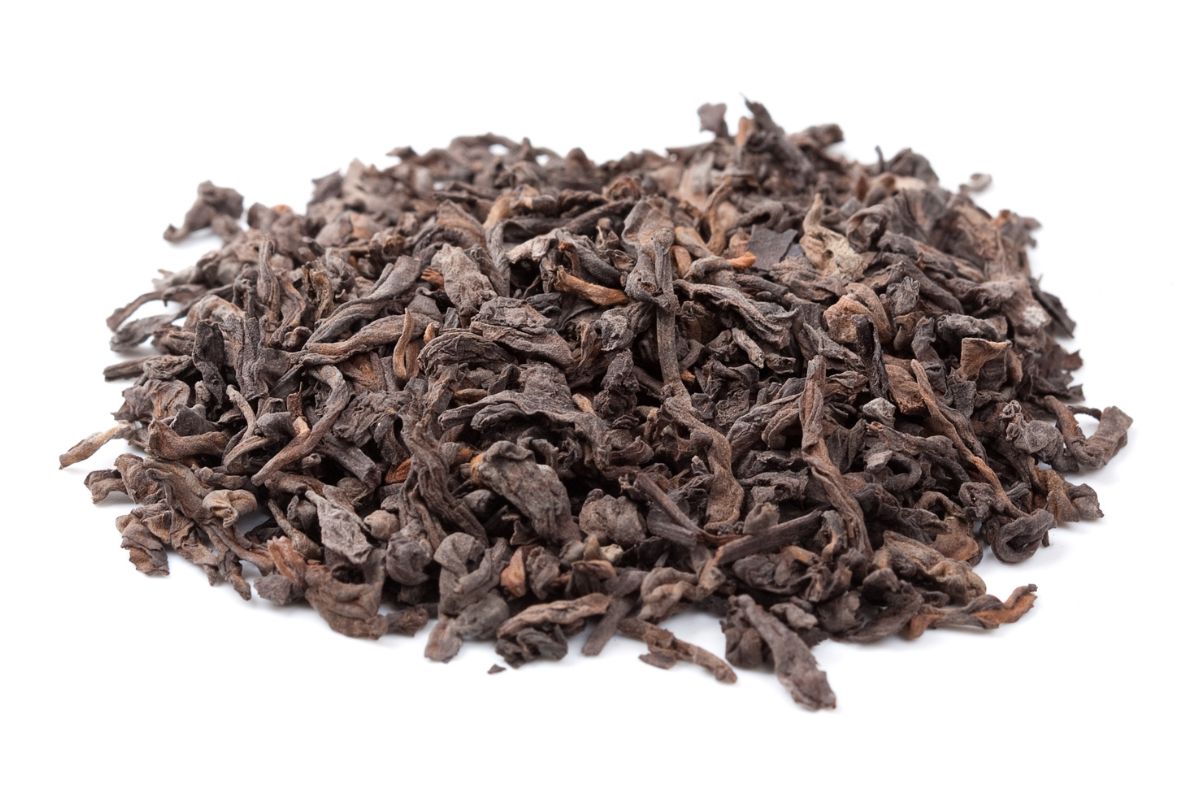
Pu-erh tea is named after the city of Pu’er in China’s Yunnan province, where it has been produced for centuries. Like most black tea, Pu-erh tea is unique because it undergoes a post-fermentation process. The leaves are picked, withered, and then either pan-fried or steamed to halt oxidation. Afterward, the tea leaves are compressed into cakes or bricks and left to ferment for a period of time, which can range from months to years.
Flavor: Pu-erh tea has a distinct flavor profile that can vary depending on the age and quality of the tea. Young pu-erh tends to have a mild, earthy flavor, while aged pu-erh develops a rich, mellow, and smooth taste. It may exhibit woody, earthy, or sometimes even slightly sweet notes. The aroma can be described as earthy, damp, and reminiscent of a forest floor. Pu-erh tea has less caffeine than most black tea but more than green tea.
Brewing: To brew pu-erh tea, rinse the tea leaves with hot water briefly before steeping the leaves in hot water (around 195°F or 90°C) for 30 seconds to a few minutes, depending on your preference. Pu-erh tea can be steeped multiple times. Increase the steeping time for subsequent brews. Experiment with different steeping times to find the taste that suits you best.
Russian Caravan Tea
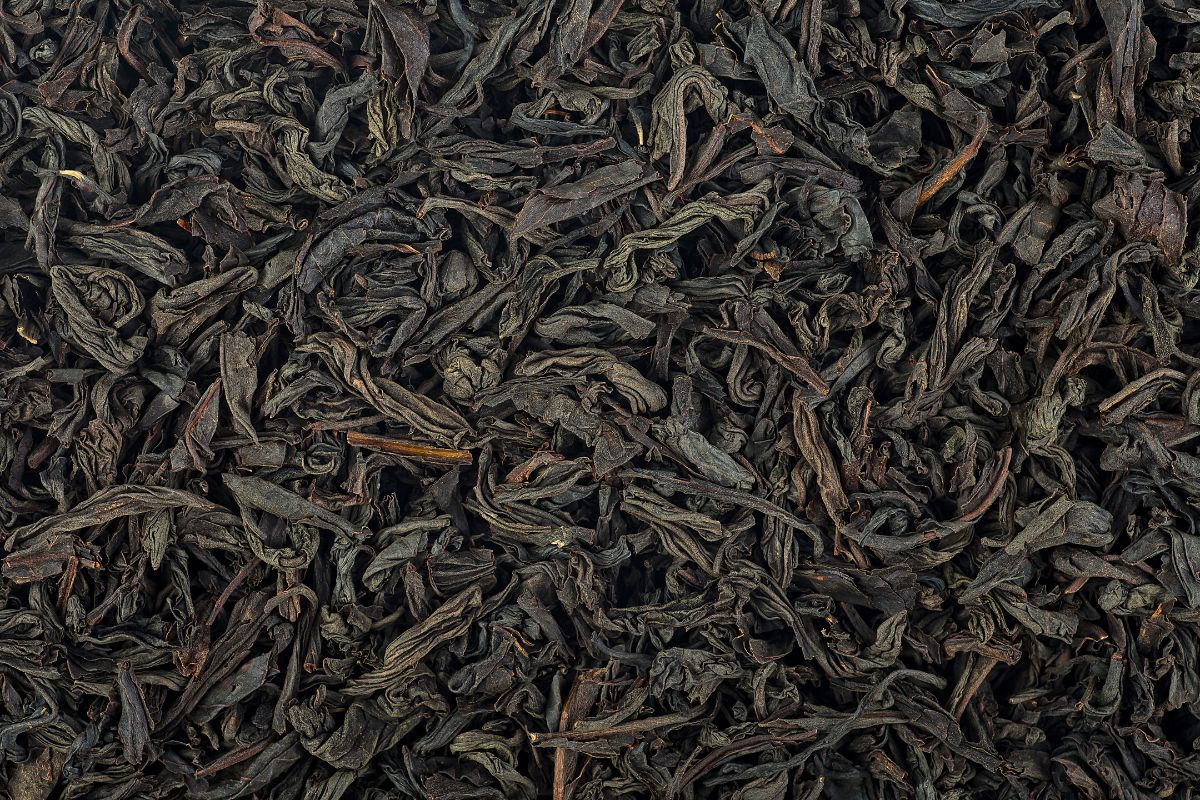
Russian Caravan tea is a blend that originated during the time when tea was transported by camel caravans from China to Russia, passing through different regions. Russian Caravan is typically made by blending several black teas together, including Chinese black teas such as Keemun, Lapsang Souchong, and sometimes Assam or Darjeeling.
Flavor: Russian Caravan tea has a smoky, robust flavor with hints of malt and a slightly sweet undertone. The aroma is distinctively smoky, evoking the scent of a campfire. Russian Caravan tea contains caffeine in amounts similar to other black teas.
Brewing: To brew Russian Caravan tea, heat water to a temperature around 200-212°F (95-100°C), and add about 1 teaspoon of tea leaves per cup. Steep for 3-5 minutes, or adjust the steeping time based on personal preference.
Taiwanese Black Tea
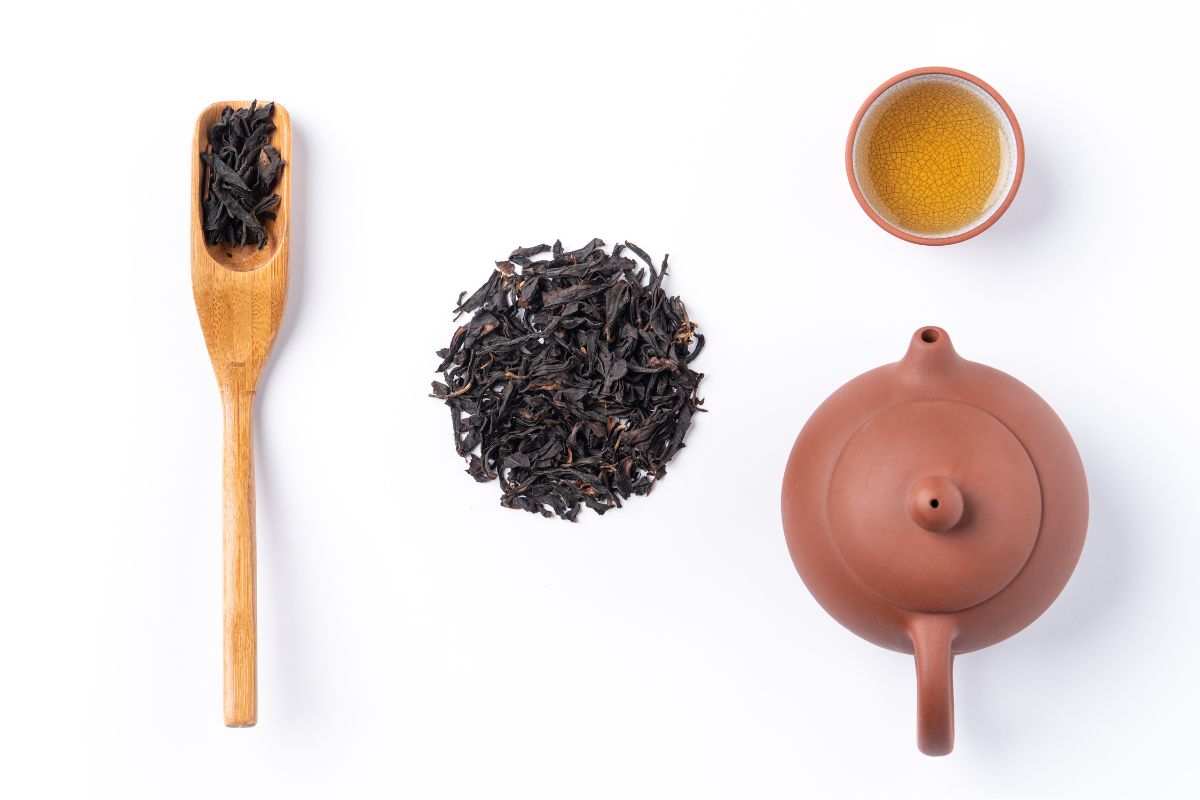
Taiwanese black tea, also known as Red Jade tea or Sun Moon Lake tea, is primarily cultivated in the Sun Moon Lake region of Nantou County, Taiwan. The leaves are plucked and then withered to reduce moisture. They are then rolled and oxidized to develop the tea’s flavor and aroma which is generally a smooth, mellow taste with notes of honey, cinnamon, and sometimes mint.
Flavor: It is known for its complex flavor profile and aromatic qualities. Taiwanese black tea contains caffeine similar to other black teas.
Brewing: To brew Taiwanese black tea, bring water to a boil and then let it cool briefly to around 195-205°F (90-96°C). Add 1 teaspoon of tea leaves per cup, and steep for 3-5 minutes, adjusting the steeping time based on your taste preferences.
Yunnan Tea
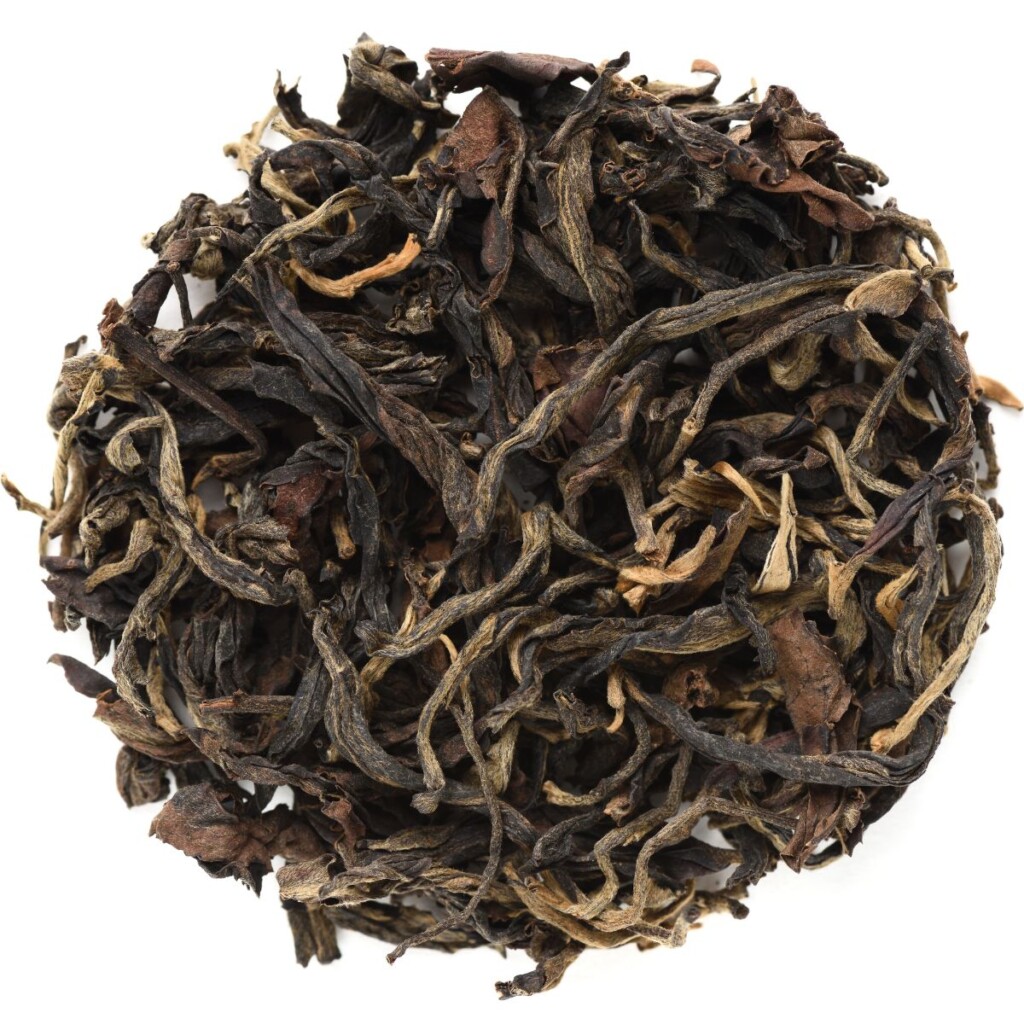
Yunnan tea is produced in the Yunnan province of China, which is known for its tea cultivation and many diverse tea varieties. It can be processed into different types, including black, green, white, and pu-erh teas.
Flavor: Yunnan black tea has a bold and robust flavor with a malty and slightly sweet taste. It often exhibits earthy and sometimes floral notes. The aroma is pleasant and can be described as a combination of malt and honey. Yunnan’s caffeine content is about in the middle of the range among black teas.
Brewing: To brew Yunnan black tea, heat water to an almost boiling temperature around 200-212°F (95-100°C). Use approximately 1 teaspoon of tea leaves per cup, and steep for 3-5 minutes, or adjust the steeping time based on personal preference.
That wraps up our rundown on 21 types of black tea. We hope you found something you can use here and as always happy brewing from your friends at Brew Buch.
Trivia Answer: A pound of tea in 1700’s London cost between 25-36 shillings, or over a month’s wage for the average worker!
